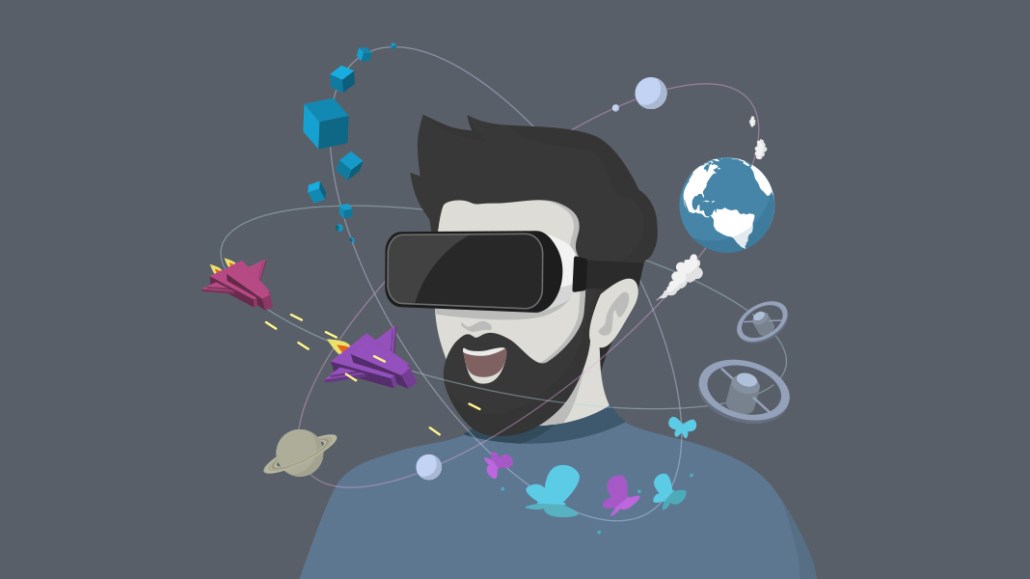Why more brands are looking to augmented reality product try ons to drive sales

Pinterest has joined the growing list of brands and platforms offering virtual reality makeup “try ons.”
On Friday, Jan. 22, the company introduced its latest augmented reality feature to let customers digitally try on eyeshadow shades from partners like Lancome, YSL and NYX Cosmetics. Pinterest already has this feature for lipstick. The addition of more try on pins means more customer interaction, and possibly the new makeup-shopping norm.
“I think this technology will be permanent post-pandemic,” said Jeremy King, svp of engineering at Pinterest. “I don’t see a world where we go to the store to try on makeup anymore. It can all be done on your phone.”
Retailers including Wayfair and Ikea rolled out 3D and augmented reality visualizations several years ago, and Warby Parker’s app has let customers virtually try-on frames since early 2019.
But with many brick and mortar stores still closed, brands have turned to AR try ons and features to attract customers. These try ons have boomed especially in the beauty space, allowing buyers to swipe through eyeshadows and lipsticks, but several different categories have amassed data showing that AR features help drive sales too.
“AR used to just be to drive engagement with a brand, and now it’s moving more to the e-commerce side,” said Mike Cadoux, gm at QReal, a firm that does 3D lenses for Snapchat and works with other brands to develop 3D ad products.
Still, there are challenges. Faces and feet are pretty easy to map, making AR an easier choice for products like glasses, hats and shoes. But larger items can take hours to render. While King may not see folks going back to a store for makeup, some retailers still want AR offerings to help increase foot-traffic.
AR’s user base is growing healthily, thanks in large part to its integration into social platforms such as Snapchat; eMarketer forecasts that there will be 47 million U.S. social network AR users in 2021, up from 38 million in 2019.
The pandemic sped up David’s Bridal’s investment in AR listings. Late last year, the company launched 50 SKUs with Vertebrae, which provides 3D and AR commerce solutions. Lizzy Ellingson, chief digital experience officer at David’s Bridal, said they had good feedback from customers on the tool, and saw 100% lift in conversions to make in-store appointments and a 30% lift in revenue.
That was good news after the intense photo process. One wedding dress took 12-16 hours to create from 300 photos. David’s Bridal plans to add another 100 SKUs, including accessories, by May.
“We don’t expect this to replace the in-store experience,” said Ellingson. “But we think this can help brides be more confident that that’s the dress they want to at least try on.”
Giving consumers more confidence is also what helped drive Perfect Corp.’s successful app YouCam Makeup, which allows customers to digitally try on makeup. Alice Chang, founder and CEO of Perfect Corp., points out that virtual try ons are more sanitary. “Prior to Covid, the use of community testers resulted in growing hygiene concerns among consumers,” she said via email. “The pandemic has brought a heightened sense of awareness to people about hygiene and physical testers are quickly being replaced by safer, more convenient, hyper-realistic digital try ons.”
Despite lipstick being covered up by masks, and many makeup users wearing less while at home, YouCam has seen a 32% increase in virtual try ons since the start of the pandemic. The company also recently raised $50 million in funding.
“When augmented reality leaves R&D and moves more to the market side, that’s when it will take off,” says Cadoux. “And it’s always better if more serious budget is allocated.”
More in Marketing

Pitch deck: How Amazon is recasting Twitch as a core part of its CTV pitch
Amazon is positioning Twitch as a defining asset in its CTV ambitions.

Netflix transforms former mall department stores into experiential venues
The location in Dallas opens this week, and one at the King of Prussia mall near Philadelphia opened last month.

Future of Marketing Briefing: AI has created a new talent paradox in programmatic agencies
The job isn’t execution anymore. AI handles that. The job is judgement.








